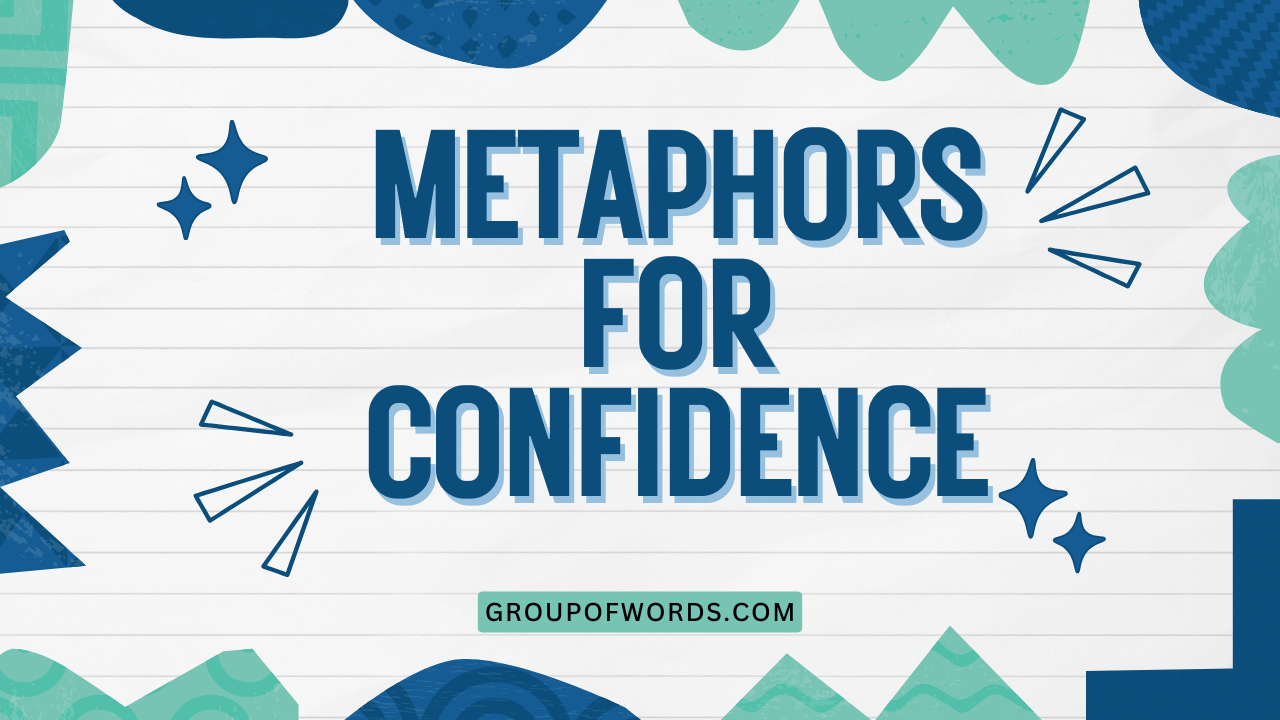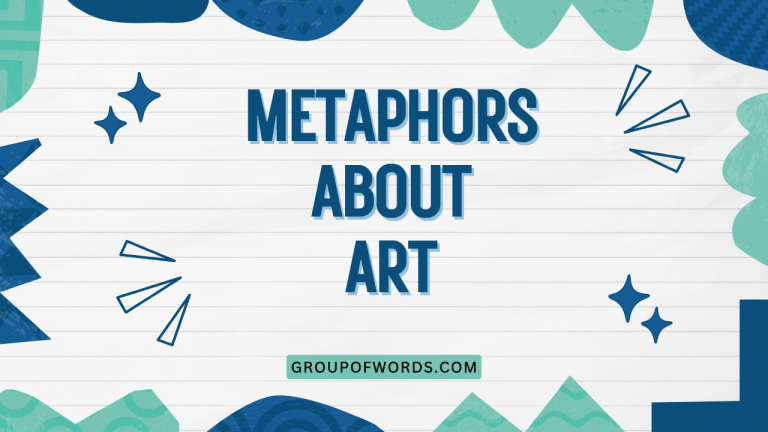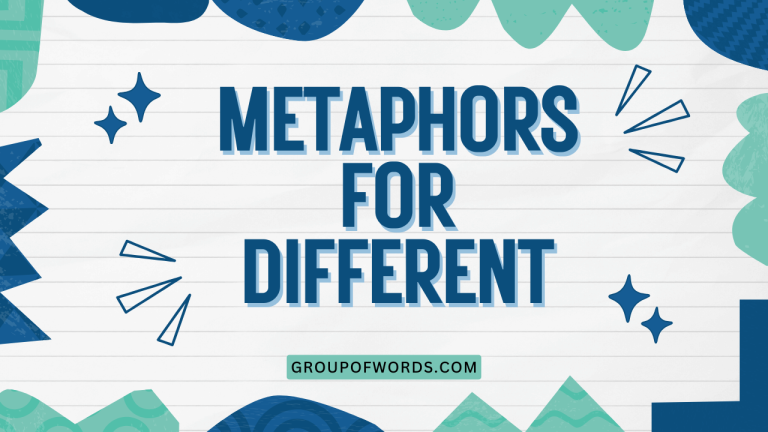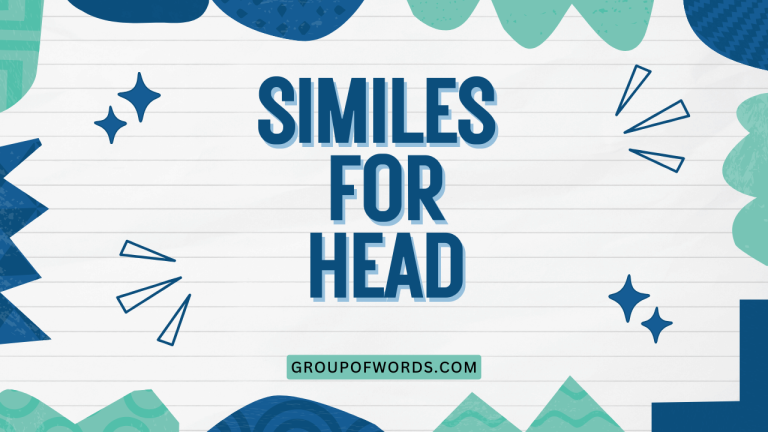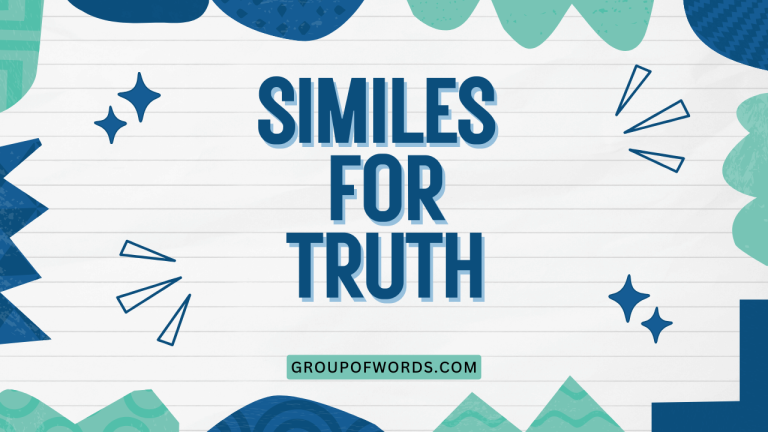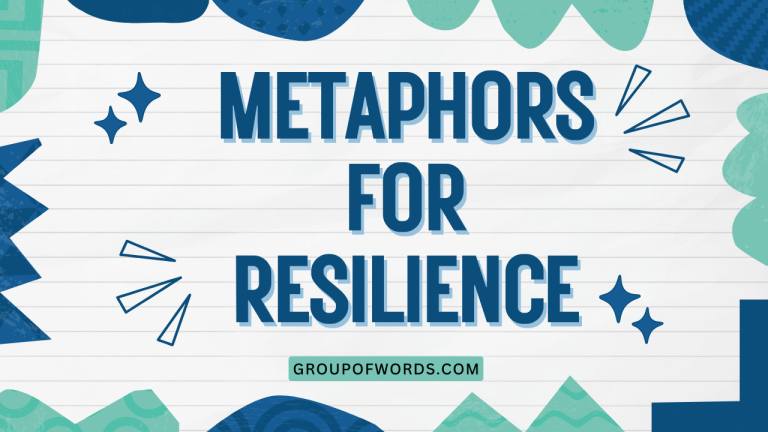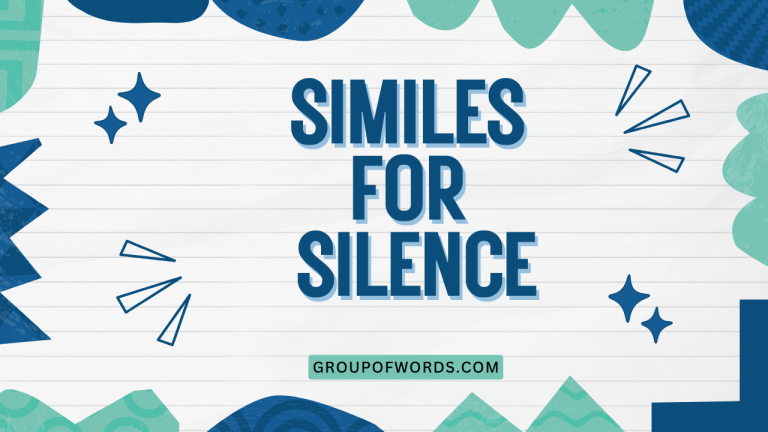Metaphors for Confidence: A Comprehensive Guide
Understanding metaphors is crucial for mastering the nuances of English. Metaphors, in particular those related to confidence, add color and depth to our language, allowing us to express complex emotions and ideas in a vivid and relatable way.
This article explores the various metaphors used to describe confidence, their structural components, and how to use them effectively. Whether you’re an ESL learner, a student, or simply someone looking to enhance your communication skills, this guide will provide you with the knowledge and tools to understand and utilize metaphors for confidence with greater precision and impact.
This article is structured to provide a comprehensive understanding of metaphors for confidence. We begin with a clear definition and explanation, followed by a breakdown of their structural elements.
We’ll then explore different categories of metaphors for confidence, providing numerous examples to illustrate their usage. Usage rules, common mistakes, practice exercises, advanced topics, and a detailed FAQ section are also included to ensure a thorough learning experience.
By the end of this article, you’ll be well-equipped to identify, interpret, and effectively use metaphors for confidence in both your spoken and written communication.
Table of Contents
- Introduction
- Definition of Metaphor
- Structural Breakdown of Metaphors
- Types of Metaphors for Confidence
- Examples of Metaphors for Confidence
- Usage Rules for Metaphors
- Common Mistakes with Metaphors
- Practice Exercises
- Advanced Topics in Metaphorical Language
- FAQ
- Conclusion
Definition of Metaphor
A metaphor is a figure of speech that directly compares two unrelated things. Unlike similes, which use “like” or “as” to make a comparison, metaphors state that one thing is another. Metaphors are used to add vividness, clarity, and emotional impact to language. They work by transferring qualities or characteristics from one concept to another, allowing us to understand the target concept in a new and insightful way.
In the context of confidence, metaphors help us understand and express the abstract feeling of self-assurance by relating it to more concrete and easily understood concepts. For example, saying someone is “a rock” implies they are stable and dependable, qualities associated with confidence.
The effectiveness of a metaphor depends on the audience’s understanding of the source concept and its relevance to the target concept.
Metaphors can be classified based on their function and context. They can be structural metaphors, shaping our understanding of a concept (e.g., “time is money”), or orientational metaphors, relating concepts to spatial orientation (e.g., “happy is up”). In the realm of confidence, we often see both types, as confidence can be structured as a source of power or oriented as a position of strength.
Structural Breakdown of Metaphors
A metaphor consists of two main components: the tenor (or topic) and the vehicle. The tenor is the subject to which metaphorical attributes are ascribed, and the vehicle is the object whose attributes are borrowed. In simpler terms, the tenor is what you’re trying to describe, and the vehicle is what you’re using to describe it.
Consider the metaphor “She is a fortress of confidence.” Here, “she” (her confidence) is the tenor, and “fortress” is the vehicle. The metaphor works because a fortress is associated with strength, resilience, and protection, qualities that are being attributed to her confidence. The connection between the tenor and the vehicle is the ground – the shared characteristics that make the metaphor effective.
Understanding these structural elements is crucial for both interpreting and creating metaphors. When analyzing a metaphor, identify the tenor, vehicle, and ground to understand the intended meaning and impact.
When creating a metaphor, choose a vehicle that has strong and relevant connections to the tenor to ensure the metaphor resonates with your audience. A well-constructed metaphor can be powerful, but a poorly chosen one can be confusing or ineffective.
Types of Metaphors for Confidence
Metaphors for confidence can be categorized based on the qualities they emphasize. These categories offer different perspectives on what confidence entails and how it manifests.
Strength and Power Metaphors
These metaphors equate confidence with physical or inherent strength. They suggest that confidence is a force that allows individuals to overcome obstacles and assert themselves.
Examples include: “He is a pillar of strength,” “She has an iron will,” “His confidence is unshakeable,” and “She’s a powerhouse of self-assurance.” These metaphors emphasize resilience and the ability to withstand pressure.
Height and Elevation Metaphors
These metaphors associate confidence with being elevated or superior. They suggest that confident individuals have a higher perspective or a position of advantage.
Examples include: “She stands tall,” “He’s on top of the world,” “Her confidence soared,” and “He rose to the occasion.” These metaphors emphasize achievement and a sense of dominance.
Light and Brightness Metaphors
These metaphors connect confidence with clarity, visibility, and positivity. They suggest that confident individuals radiate positivity and are easily seen and recognized.
Examples include: “Her confidence shone brightly,” “He illuminated the room with his self-assurance,” “She’s a beacon of confidence,” and “His confidence radiated outwards.” These metaphors emphasize charisma and the ability to inspire others.
Control and Command Metaphors
These metaphors describe confidence as a form of control over oneself and one’s environment. They suggest that confident individuals are in charge of their actions and destinies.
Examples include: “She has a firm grip on her emotions,” “He’s at the helm of his life,” “She commands respect,” and “He’s in control of the situation.” These metaphors emphasize decisiveness and the ability to lead.
Armor and Protection Metaphors
These metaphors portray confidence as a shield or protective layer that guards against negativity and self-doubt. They suggest that confident individuals are shielded from external pressures.
Examples include: “She wears her confidence like armor,” “He has a thick skin,” “Her confidence is her shield,” and “He’s protected by his self-belief.” These metaphors emphasize resilience and the ability to withstand criticism.
Examples of Metaphors for Confidence
The following tables provide a variety of examples of metaphors for confidence, categorized by type. These examples demonstrate how different metaphors can be used to convey various aspects of confidence.
The table below presents strength and power metaphors for confidence, showing how they emphasize resilience and the ability to overcome challenges.
| Metaphor | Explanation |
|---|---|
| He is a rock of confidence. | He provides unwavering support and stability. |
| She has an iron will to succeed. | She possesses relentless determination and resolve. |
| His confidence is a fortress. | His self-assurance is impenetrable and secure. |
| She’s a powerhouse of self-belief. | She possesses immense inner strength and conviction. |
| He’s a giant in his field, brimming with confidence. | He is dominant and influential due to his strong self-assurance. |
| Her confidence is as solid as a mountain. | Her self-assurance is unshakeable and enduring. |
| He’s a force of nature when he’s confident. | He is powerful and unstoppable when he believes in himself. |
| She carries her confidence like a shield. | She uses her self-assurance to protect herself from negativity. |
| He’s a tower of strength when he’s confident. | He is a source of support and stability for others. |
| Her confidence is the bedrock of her success. | Her self-assurance is the foundation upon which her achievements are built. |
| He’s a steel beam of self-assurance. | He is strong, resilient, and unwavering in his belief in himself. |
| She’s a lioness when it comes to defending her confidence. | She is fierce and protective of her self-assurance. |
| He’s a titan of unwavering self-belief. | He possesses immense and unyielding confidence. |
| Her confidence is an unyielding oak tree. | Her self-assurance is strong, enduring, and resilient. |
| He is the embodiment of unshakable confidence. | He represents the epitome of unwavering self-assurance. |
| She’s a hurricane of unstoppable confidence. | She is a powerful and overwhelming force of self-assurance. |
| He has the confidence of a champion. | He possesses the self-assurance and determination of a winner. |
| Her confidence is a steel spine that supports her. | Her self-assurance provides unwavering support and strength. |
| He’s a rock-solid foundation of self-belief. | He is a reliable and stable source of self-assurance. |
| She’s an indomitable force of unwavering confidence. | She is an unstoppable and resilient source of self-assurance. |
| He has the strength of a thousand confident men. | He possesses an incredible amount of self-assurance and power. |
| Her confidence is a weapon against her fears. | Her self-assurance protects her from doubt and insecurity. |
| He’s a bastion of unwavering self-belief. | He is a stronghold of unyielding confidence. |
| She’s a tower of resilience, built on confidence. | She is strong, enduring, and unwavering due to her self-assurance. |
| He’s a fortress, impervious to doubt and self-doubt. | He is impenetrable to negative thoughts and insecurities. |
| Her confidence is the anchor that keeps her grounded. | Her self-assurance provides stability and prevents her from wavering. |
| He’s a force to be reckoned with, fueled by his confidence. | He is powerful and influential due to his strong self-assurance. |
The table below showcases height and elevation metaphors for confidence, emphasizing achievement and a sense of superiority.
| Metaphor | Explanation |
|---|---|
| She stands tall in the face of adversity. | She maintains her confidence and composure despite challenges. |
| He’s on top of the world when he’s confident. | He feels successful and elated when he believes in himself. |
| Her confidence soared after the successful presentation. | Her self-assurance increased significantly after achieving a goal. |
| He rose to the occasion with unwavering confidence. | He met the challenge with strong self-assurance and competence. |
| She’s reached the peak of her confidence. | She has achieved the highest level of self-assurance. |
| He’s head and shoulders above the competition, full of confidence. | He is superior to his rivals due to his strong self-belief. |
| Her confidence elevated her to new heights. | Her self-assurance helped her achieve greater success. |
| He floats on a cloud of self-assurance. | He feels carefree and confident in his abilities. |
| She’s climbing the ladder of success with unwavering confidence. | She is progressing towards her goals with strong self-assurance. |
| He’s flying high on the wings of confidence. | He is experiencing great success and feeling self-assured. |
| Her confidence is a skyscraper, reaching for the sky. | Her self-assurance is immense and ambitious. |
| He’s standing on the summit of self-belief. | He has reached the highest level of confidence. |
| She’s towering over her challenges with unwavering confidence. | She is overcoming obstacles with strong self-assurance. |
| He’s soaring above the clouds of doubt with unwavering confidence. | He is overcoming insecurities with strong self-belief. |
| Her confidence is a hot air balloon, lifting her to new heights. | Her self-assurance is propelling her towards greater success. |
| He’s standing on the shoulders of giants, brimming with confidence. | He is building upon the achievements of others with strong self-belief. |
| She’s reaching for the stars with unwavering confidence. | She is pursuing ambitious goals with strong self-assurance. |
| He’s riding the wave of success, fueled by confidence. | He is experiencing a period of success due to his self-assurance. |
| Her confidence is a rocket, propelling her towards her dreams. | Her self-assurance is driving her towards her aspirations. |
| He’s scaling the mountain of achievement with unwavering confidence. | He is progressing towards his goals with strong self-assurance. |
| She’s on the crest of a wave of self-belief. | She is experiencing a peak of confidence and success. |
| He’s floating above the negativity, buoyed by confidence. | He is unaffected by negativity due to his self-assurance. |
| She’s walking on air, fueled by her newfound confidence. | She feels elated and self-assured after a recent success. |
| He’s standing tall, a monument to self-belief. | He projects an image of unwavering confidence and strength. |
| She’s a beacon of confidence, shining brightly on her path. | She inspires others with her strong self-assurance. |
| He’s riding the crest of success with a wave of confidence. | He is experiencing a peak of success due to his self-assurance. |
The table below provides examples of light and brightness metaphors for confidence, emphasizing clarity and positivity.
| Metaphor | Explanation |
|---|---|
| Her confidence shone brightly during the presentation. | Her self-assurance was clearly evident and impressive. |
| He illuminated the room with his self-assured presence. | He brought a sense of confidence and positivity to the environment. |
| She’s a beacon of confidence in times of uncertainty. | She provides guidance and reassurance to others. |
| His confidence radiated outwards, inspiring those around him. | His self-assurance had a positive impact on others. |
| Her confidence is a spotlight, highlighting her strengths. | Her self-assurance draws attention to her positive qualities. |
| He’s a shining example of self-belief. | He serves as an inspiration to others due to his strong self-assurance. |
| Her confidence is a ray of sunshine on a cloudy day. | Her self-assurance brings positivity and optimism to difficult situations. |
| He’s a bright spark of self-assurance in a dull environment. | He brings energy and enthusiasm to a lackluster setting. |
| Her confidence is a guiding light in her decision-making. | Her self-assurance helps her make clear and confident choices. |
| He’s a radiant source of self-belief. | He exudes confidence and inspires others. |
| Her confidence is like a sunbeam, warming everyone around her. | Her self-assurance creates a positive and comforting atmosphere. |
| He’s a lighthouse of self-assurance, guiding others through challenges. | He provides guidance and support to those facing difficulties. |
| Her confidence is a spark that ignites her passion. | Her self-assurance fuels her enthusiasm and drive. |
| He’s a brilliant star of self-belief. | He is a notable and inspiring example of self-assurance. |
| Her confidence is a torch, illuminating her path to success. | Her self-assurance guides her towards her goals. |
| He’s a luminary of self-belief, inspiring others to shine. | He inspires others to embrace their own self-assurance. |
| Her confidence is a flame that burns brightly within her. | Her self-assurance is a constant source of energy and determination. |
| He’s a beacon of hope, radiating unwavering confidence. | He provides reassurance and optimism with his strong self-assurance. |
| Her confidence is a constellation, guiding her decisions. | Her self-assurance provides direction and clarity in her choices. |
| He’s a supernova of self-belief, exploding with potential. | He is brimming with untapped potential and self-assurance. |
| Her confidence is a sun, around which her ideas orbit. | Her self-assurance is the central force that drives her creativity. |
| He’s a bright idea, powered by self-belief. | He is innovative and driven by his strong self-assurance. |
| Her confidence is a light at the end of the tunnel. | Her self-assurance provides hope and direction in difficult times. |
| He’s a spark of brilliance, fueled by unwavering confidence. | He is innovative and driven by his strong self-assurance. |
| Her confidence is a lantern, guiding her through the dark. | Her self-assurance provides clarity and direction in challenging situations. |
| He’s a torchbearer of self-belief, inspiring others to follow. | He inspires others to embrace their own self-assurance and potential. |
The table below provides more examples of metaphors for confidence, highlighting control and command.
| Metaphor | Explanation |
|---|---|
| She has a firm grip on her emotions. | She is able to control and manage her feelings effectively. |
| He’s at the helm of his life, steering it with confidence. | He is in control of his decisions and direction in life. |
| She commands respect with her self-assured demeanor. | She earns admiration and deference through her confident behavior. |
| He’s in control of the situation, exuding confidence. | He demonstrates self-assurance and competence in handling the circumstances. |
| She’s the conductor of her own destiny, leading with confidence. | She directs her life with assurance and purpose. |
| He has the reins of leadership in his hands, guiding with self-belief. | He is in charge and leads with conviction. |
| She’s the master of her own fate, crafting it with unwavering confidence. | She shapes her life with self-assurance and determination. |
| He’s the architect of his own success, building it with confidence. | He creates his own achievements through self-belief and hard work. |
| She’s the captain of her ship, navigating life with self-assurance. | She guides her life with confidence and skill. |
| He’s the general of his own army, commanding respect with confidence. | He leads with self-assurance and earns admiration. |
| She’s the puppeteer of her own actions, controlling them with confidence. | She directs her actions with self-assurance and precision. |
| He’s the composer of his own symphony, orchestrating success with confidence. | He creates his own achievements with skill and self-belief. |
| She’s the navigator of her journey, guiding herself with confidence. | She directs her life with self-assurance and purpose. |
| He’s the driver of his own destiny, steering himself with confidence. | He controls his life and direction with self-assurance. |
| She’s the pilot of her life, flying high with self-assurance. | She guides her life with confidence and skill. |
| He’s the director of his own story, crafting it with confidence. | He creates his life with self-assurance and purpose. |
| She’s the choreographer of her actions, moving with confidence. | She directs her actions with self-assurance and grace. |
| He’s the helmsman of his fate, steering it with unwavering confidence. | He controls his life and direction with self-assurance. |
| She’s the ringmaster of her life, commanding attention with confidence. | She directs her life with self-assurance and charisma. |
| He’s the maestro of his destiny, conducting success with confidence. | He creates his own achievements with skill and self-belief. |
| She’s the queen of her own domain, ruling with unwavering confidence. | She controls her life with self-assurance and authority. |
| He’s the king of his castle, commanding respect with confidence. | He leads with self-assurance and earns admiration. |
| She’s the empress of her own empire, reigning with self-assurance. | She controls her life with confidence and authority. |
| She’s the ruler of her world, governing it with confidence. | She directs her life with self-assurance and purpose. |
| He’s the sovereign of his realm, steering his destiny with confidence. | He controls his life and direction with self-assurance. |
Usage Rules for Metaphors
Using metaphors effectively requires an understanding of certain guidelines. Here are some key rules to keep in mind:
- Clarity: Ensure that the metaphor is easily understood by your audience. Avoid obscure or overly complex comparisons.
- Relevance: Choose a vehicle that has a clear and logical connection to the tenor. The shared characteristics should be evident.
- Consistency: Avoid mixing metaphors that create conflicting or nonsensical images. For example, “He’s burning the midnight oil at both ends” is confusing.
- Originality: While common metaphors can be effective, strive for originality to make your language more engaging and memorable.
- Context: Consider the context in which you’re using the metaphor. Is it appropriate for the audience and the situation?
- Overuse: Avoid overusing metaphors, as this can make your language sound contrived or artificial.
It’s also important to be aware of dead metaphors – metaphors that have become so common that they no longer have a strong impact. For example, “time flies” is a dead metaphor. While these can be used, be mindful of their diminished effect.
Common Mistakes with Metaphors
Several common mistakes can undermine the effectiveness of metaphors. Being aware of these pitfalls can help you avoid them.
Mixed Metaphors: Combining two or more metaphors that create a contradictory or nonsensical image.
Incorrect: “We need to nip it in the bud before it snowballs out of the water.”
Correct: “We need to nip it in the bud before it snowballs.” or “We need to tackle it head-on before it gets out of control.”
Clichéd Metaphors: Using overused and unoriginal metaphors that have lost their impact.
Incorrect: “He was a diamond in the rough.”
Correct: “He possessed hidden potential that was waiting to be discovered.”
Inappropriate Metaphors: Using metaphors that are not suitable for the context or audience.
Incorrect: (In a formal business presentation) “Our strategy is a slam dunk.”
Correct: (In a formal business presentation) “Our strategy is poised for significant success.”
Overly Complex Metaphors: Using metaphors that are too abstract or difficult to understand.
Incorrect: “His confidence was a fractal iteration of self-referential validation.”
Correct: “His confidence was built upon a strong foundation of self-belief.”
Misunderstanding the Ground: Failing to establish a clear connection between the tenor and the vehicle.
Incorrect: “She is a refrigerator of confidence.” (Unless the intended meaning is that she is cold and unapproachable)
Correct: “She is a furnace of confidence.”
Practice Exercises
Test your understanding of metaphors for confidence with these exercises.
Exercise 1: Identify the Metaphor
Identify the metaphor in each sentence and explain its meaning.
| Question | Answer |
|---|---|
| 1. Her confidence is her armor. | Metaphor: “Her confidence is her armor.” Meaning: Her confidence protects her from negativity. |
| 2. He’s a powerhouse of self-belief. | Metaphor: “He’s a powerhouse of self-belief.” Meaning: He possesses immense inner strength and conviction. |
| 3. She stands tall in the face of adversity. | Metaphor: “She stands tall.” Meaning: She maintains her confidence despite challenges. |
| 4. His confidence shone brightly. | Metaphor: “His confidence shone brightly.” Meaning: His self-assurance was clearly evident. |
| 5. She has a firm grip on her emotions. | Metaphor: “She has a firm grip.” Meaning: She is able to control her emotions effectively. |
| 6. He’s at the helm of his life. | Metaphor: “He’s at the helm.” Meaning: He is in control of his decisions and direction in life. |
| 7. Her confidence is a rocket, propelling her towards her dreams. | Metaphor: “Her confidence is a rocket.” Meaning: Her self-assurance is driving her towards her aspirations. |
| 8. He’s a beacon of self-belief. | Metaphor: “He’s a beacon of self-belief.” Meaning: He serves as an inspiration to others due to his strong self-assurance. |
| 9. She’s a titan of unwavering self-belief. | Metaphor: “She’s a titan of unwavering self-belief.” Meaning: She possesses immense and unyielding confidence. |
| 10. He is the embodiment of unshakable confidence. | Metaphor: “He is the embodiment of unshakable confidence.” Meaning: He represents the epitome of unwavering self-assurance. |
Exercise 2: Create Your Own Metaphors
Create a metaphor for confidence using the following vehicles.
| Vehicle | Your Metaphor |
|---|---|
| Sun | Her confidence is like the sun, radiating warmth and positivity to everyone she meets. |
| Mountain | His confidence is as solid as a mountain, unyielding and steadfast in the face of any challenge. |
| River | Her confidence flows like a river, constantly moving forward and overcoming obstacles in its path. |
| Tree | His confidence is deeply rooted like a tree, providing strength and stability even in the strongest storms. |
| Star | Her confidence shines like a star, guiding and inspiring others to reach for their dreams. |
| Armor | His confidence is his armor, protecting him from doubt and fear as he faces the world. |
| Fire | Her confidence burns like a fire, igniting passion and driving her to achieve her goals. |
| Bridge | His confidence is a bridge, connecting him to opportunities and allowing him to overcome obstacles. |
| Music | Her confidence is like music, filling the room with harmony and inspiring everyone to dance to her tune. |
| Wind | His confidence is like the wind, pushing him forward and carrying him to new heights of success. |
Exercise 3: Correct the Mistakes
Identify and correct the mistakes in the following sentences.
| Question | Answer |
|---|---|
| 1. He was a diamond in the rough, but he also hit the nail on the head. | Corrected: He was a diamond in the rough, possessing untapped potential. |
| 2. Her confidence was a building on fire, but she kept her head above water. | Corrected: Her confidence was a building on fire, inspiring passion and determination. |
| 3. His plans are written in stone, but we need to think outside the box. | Corrected: His plans are meticulously crafted, but we need to think outside the box. |
| 4. She’s burning the midnight oil at both ends to get ahead. | Corrected: She’s burning the midnight oil to get ahead. |
| 5. His confidence is a roller coaster of emotions. | Corrected: His confidence is unwavering, a testament to his self-belief. |
| 6. She has a heart of stone, but she also wears her heart on her sleeve. | Corrected: She is resilient, but also wears her heart on her sleeve. |
| 7. His ideas are a breath of fresh air, but they’re also a dime a dozen. | Corrected: His ideas are a breath of fresh air, innovative and refreshing. |
| 8. Her confidence is a ship that has sailed, but she’s still holding all the aces. | Corrected: Her confidence is a ship that has sailed, but she is resourceful and determined. |
| 9. His confidence is a double-edged sword, but he also has a silver lining. | Corrected: His confidence is a double-edged sword, capable of both success and downfall. |
| 10. She’s walking on thin ice, but she’s also sitting pretty. | Corrected: She’s walking on thin ice, but she is determined to succeed. |
Advanced Topics in Metaphorical Language
For advanced learners, exploring the theoretical underpinnings of metaphor can provide a deeper understanding. Consider researching Conceptual Metaphor Theory, which proposes that metaphors are not just linguistic devices but fundamental to how we think and understand the world. Exploring the works of linguists like George Lakoff and Mark Johnson can provide valuable insights.
Another advanced topic is the use of extended metaphors, where a single metaphor is developed and expanded throughout a text. This can create a powerful and cohesive effect
.
Finally, studying the role of metaphor in different cultures and languages can reveal fascinating variations and nuances in how confidence is conceptualized and expressed. This comparative approach can enhance your cross-cultural communication skills and sensitivity.
FAQ
What is the difference between a metaphor and a simile?
A metaphor directly equates two things, while a simile uses “like” or “as” to make a comparison. For example, “He is a lion” (metaphor) versus “He is like a lion” (simile).
Why are metaphors useful in describing abstract concepts like confidence?
Metaphors make abstract concepts more concrete and relatable by associating them with familiar objects or ideas. This helps in understanding and communicating complex emotions.
How can I avoid using clichéd metaphors?
Strive for originality by brainstorming fresh and unexpected comparisons. Consider the specific qualities you want to emphasize and choose vehicles that reflect those qualities in a unique way.
What should I do if my audience doesn’t understand my metaphor?
Rephrase the metaphor or provide additional explanation. Consider your audience’s background and choose metaphors that are relevant to their experiences.
Can a metaphor be too subtle?
Yes, if the connection between the tenor and the vehicle is too weak or obscure, the metaphor may go unnoticed or be misinterpreted. Ensure that the ground is clear and evident.
Are metaphors only used in literature?
No, metaphors are used in everyday language, business communication, and various forms of expression. They are a fundamental part of how we think and communicate.
How do cultural differences affect the interpretation of metaphors?
Different cultures may have different associations and understandings of certain concepts, which can affect how metaphors are interpreted. It’s important to be aware of these cultural nuances when using metaphors in cross-cultural communication.
Can metaphors be combined with other figures of speech?
Yes, metaphors can be combined with other figures of speech such as similes, personification, and hyperbole to create more complex and impactful language.
How do I choose the right metaphor for a specific situation?
Consider the context, your audience, and the message you want to convey. Choose a metaphor that is clear, relevant, and appropriate for the situation.
What are some resources for learning more about metaphors?
Books on rhetoric, linguistics, and creative writing can provide valuable insights. Online resources, such as literary websites and academic journals, can also be helpful.
Conclusion
Metaphors are powerful tools for expressing and understanding the multifaceted concept of confidence. By grasping the structural elements, exploring different types, and adhering to usage rules, you can effectively incorporate metaphors into your communication.
Avoiding common mistakes and practicing regularly will further enhance your proficiency. As you continue to explore the world of metaphorical language, you’ll discover new and creative ways to articulate the nuances of confidence and inspire those around you.
Embrace the art of metaphor, and let your language shine with clarity, impact, and originality.
